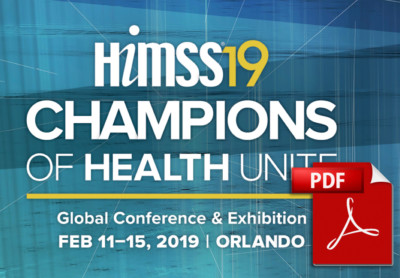Recently, during HIMSS19 in Orlando, FL, I had the pleasure of presenting on the new developments in Medicare’s approach to incentivizing the use of digital health tools in care delivery across several of its beneficiary programs. The updates I shared during my session are the result of years of cross-stakeholder consensus and advocacy, and frankly, were a long time coming. Ultimately, this engagement with the digital healthcare community attending HIMSS19 was rewarding for me, as attendees provided valuable feedback and questions about my presentation topic.
The Connected Health Initiative’s (CHI) efforts to attain reasonable reimbursement for Medicare caregivers for the use of digital health innovations has been a goal for many years (and it remains a primary goal), and CHI diligently worked with Congress and the Centers for Medicare and Medicaid Services (CMS) to advance policy change that would result in this much-needed reimbursement. Built on the work ofthe American Medical Association’s Digital Medicine Payment Advisory Group (DMPAG), three new Current Procedural Terminology® (CPT) Codes were developed to capture the technical and professional elements of remote patient monitoring. As a member of the DMPAG, CHI is proud to contribute to their development and in assuring that CMS later confirmed activation and payment for these new codes its Calendar Year 2019 Physician Fee Schedule. Further, pro-digital health policy changes have also occurred in other Medicare payment systems (today), as well as in the rules for the future value-based Medicare system (known as the Quality Payment Program).
These developments created a good deal of excitement across the digital health community, and I was happy to provide the HIMSS community with our detailed summary of what CMS has done to support the use of new remote patient monitoring tools in Medicare. These updates are not just in the PFS, but also in other important payments systems such as the Home Health Prospective Payment System, as well as some steps that indicate CMS’ support of the use of a wide range of products and services to bring patient-generated health data (PGHD) into the care continuum in future value-based care models.
I hope that the slides I presented can be a resource to anyone interested in learning more (embedded below), and that those with any comments or questions reach out to me at [email protected]!
While the different changes CMS made at the regulatory level are very encouraging, I’m also very aware of the need for further guidance from the agency regarding the ins and outs of how RPM will be billed in Medicare. There are a number of threshold questions that remain unanswered, and CHI continues to seek clarity on these questions. Much work remains to be done and CHI seeks your partnership in making sure that every American can realize the potential of digital health innovations in both prevention and treatment of disease.

